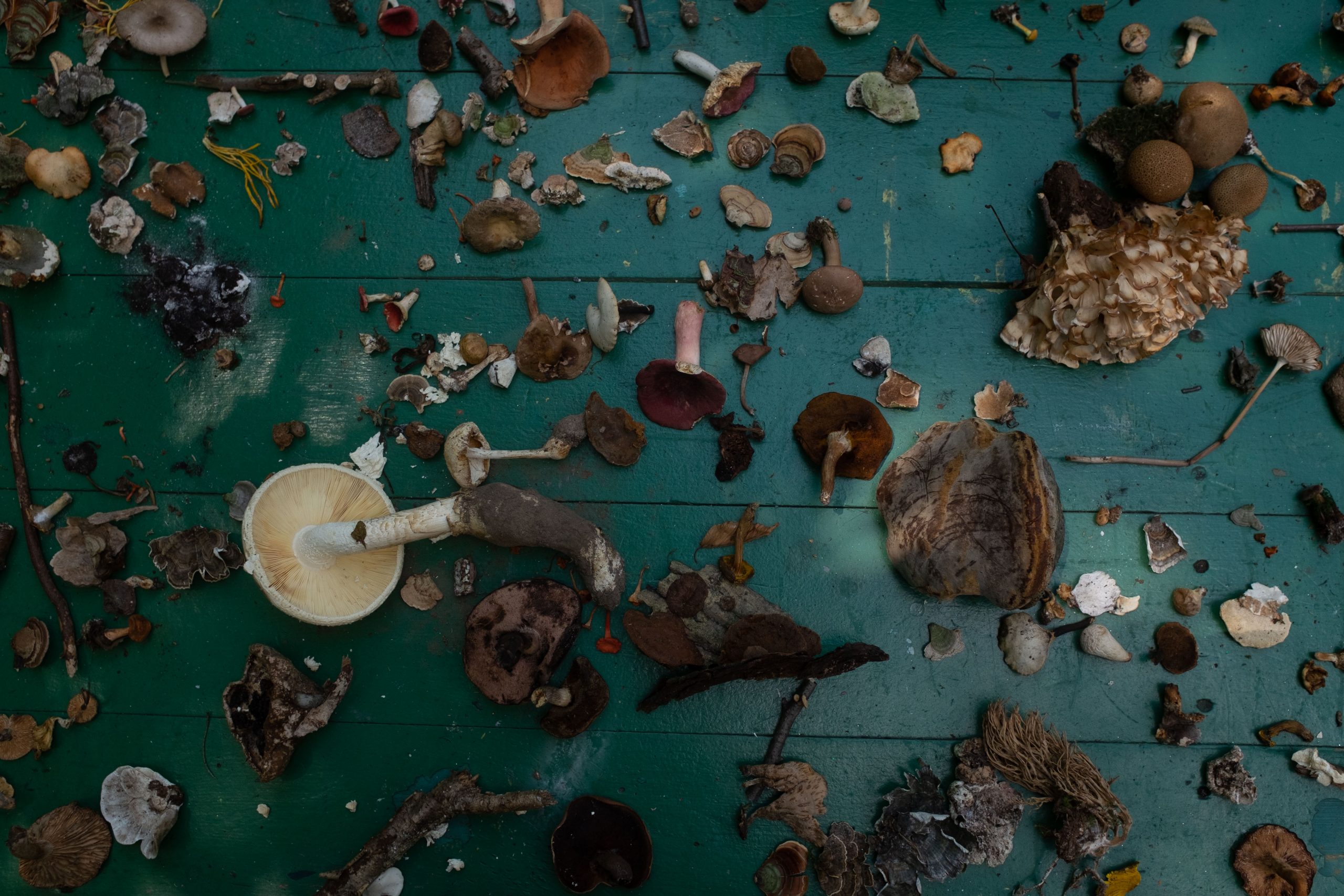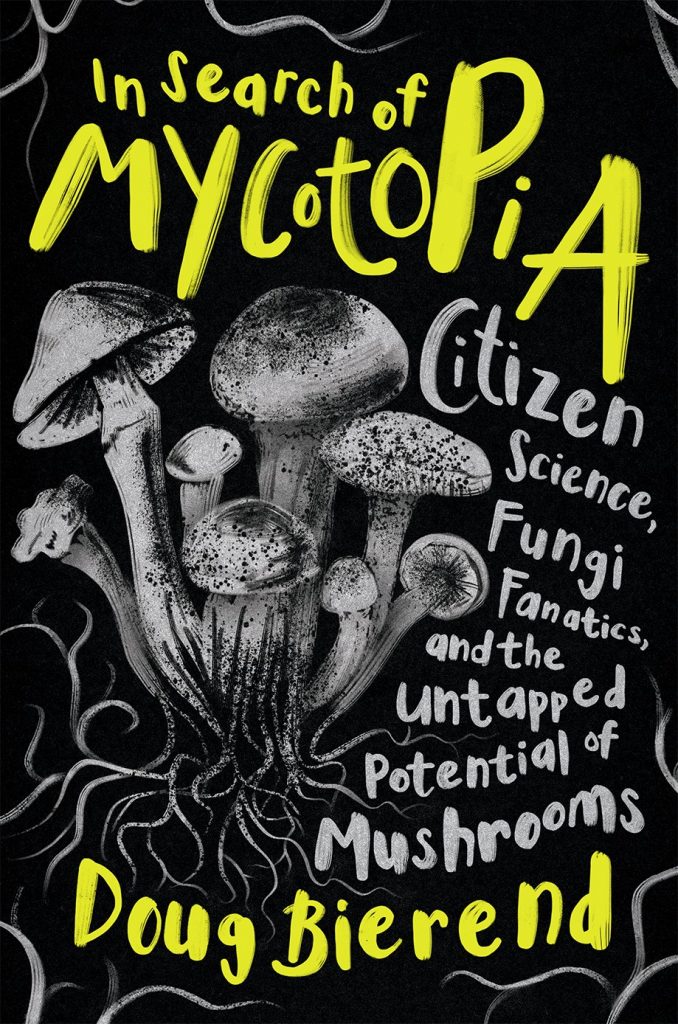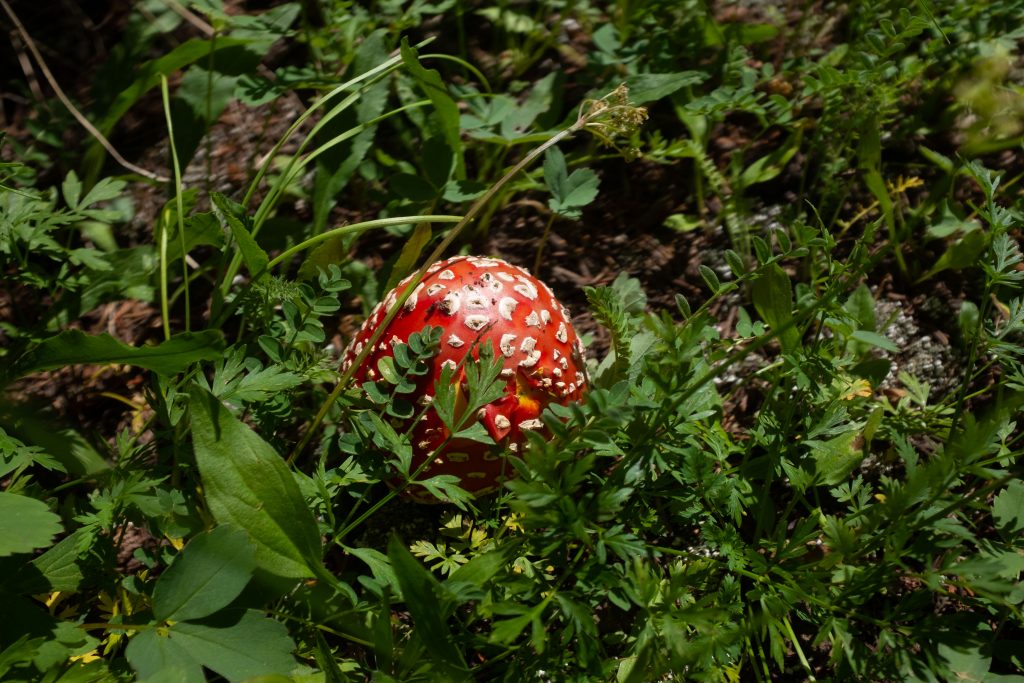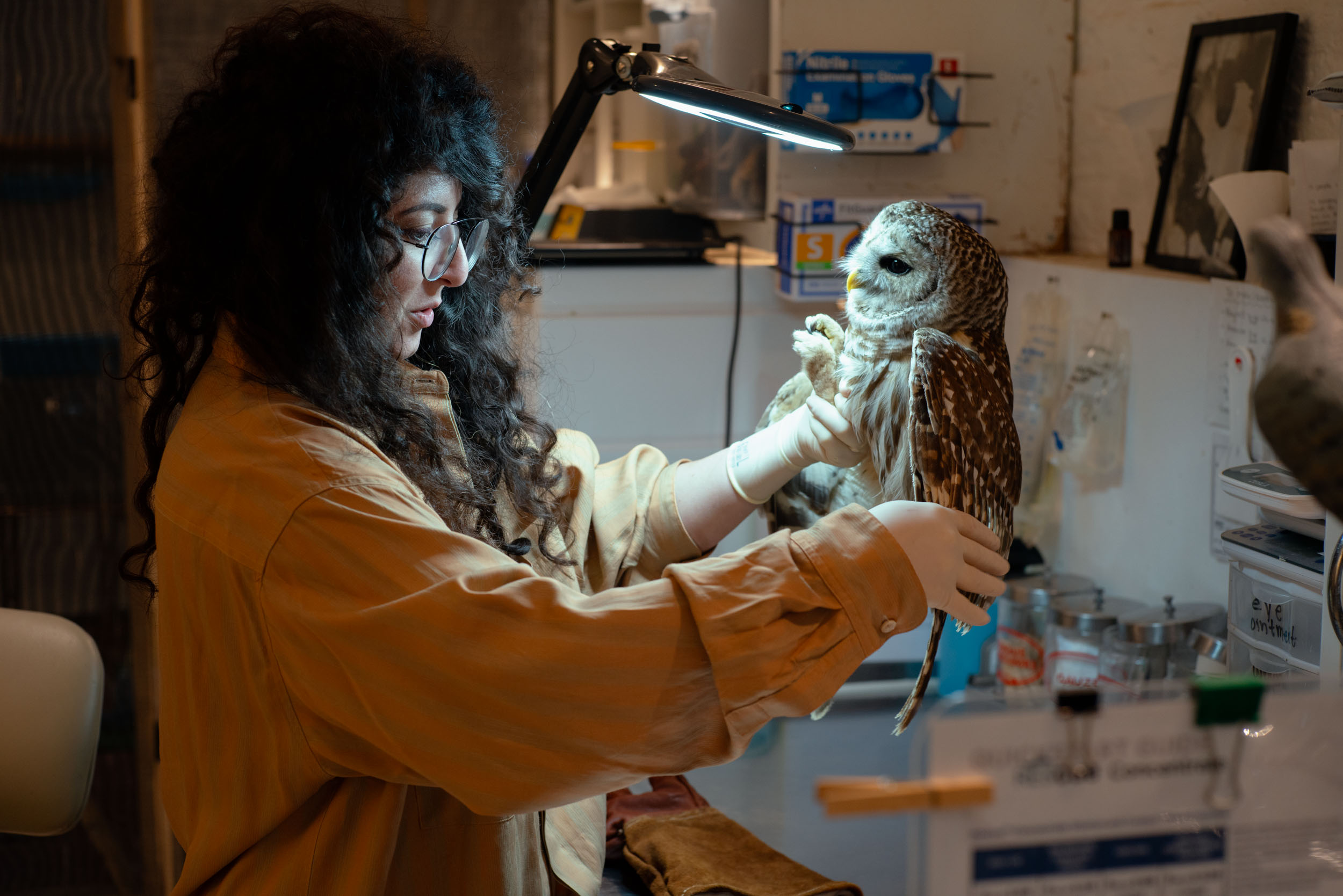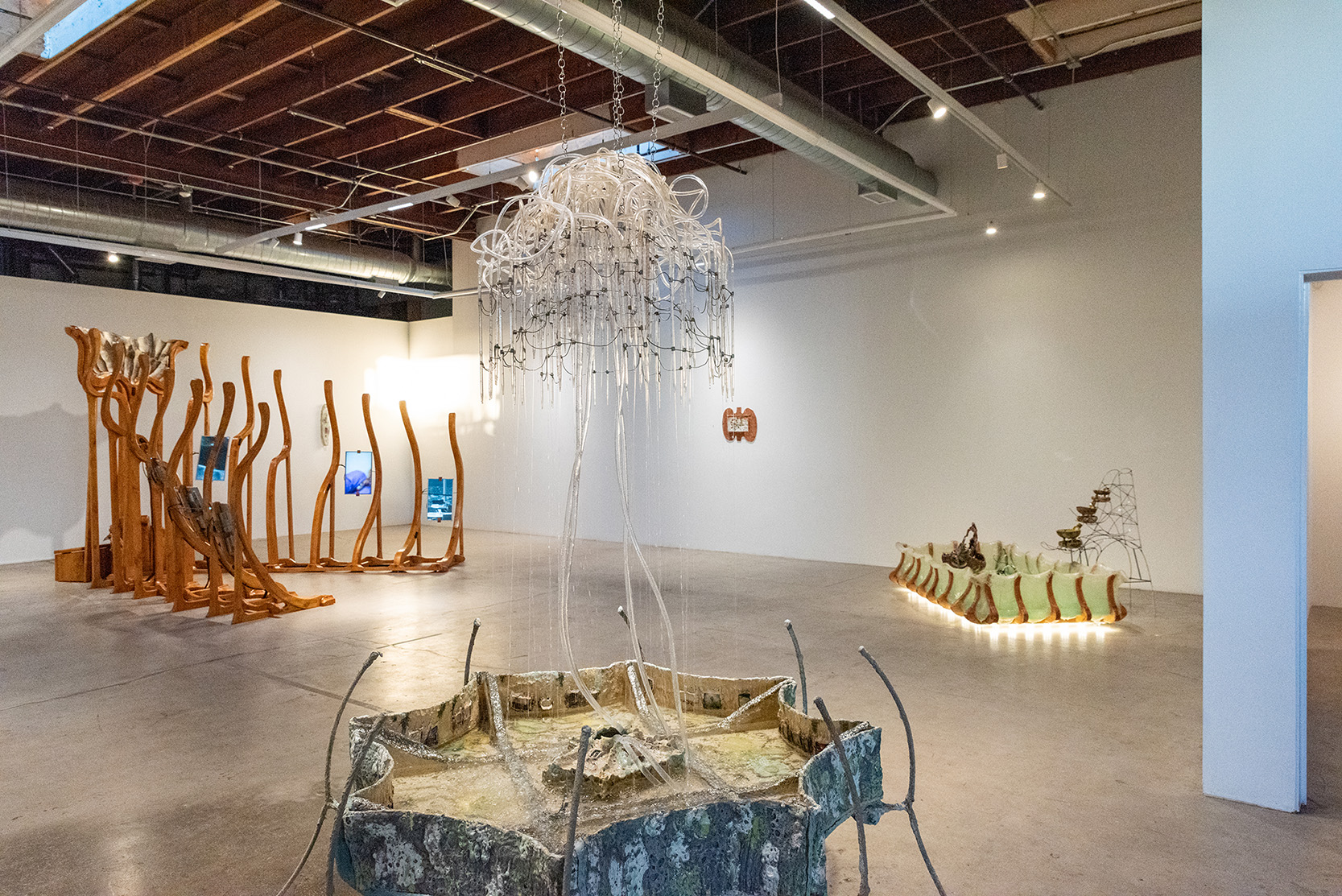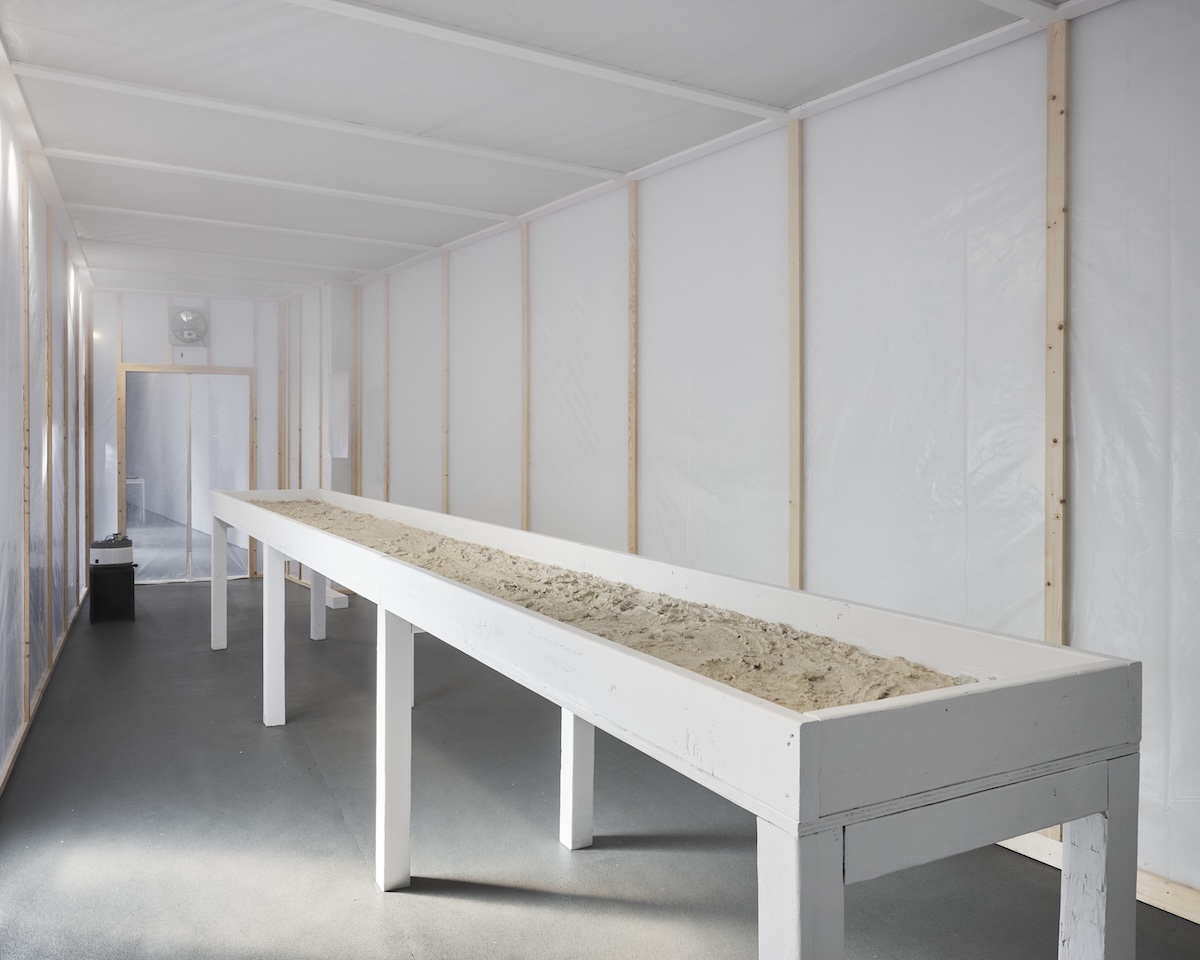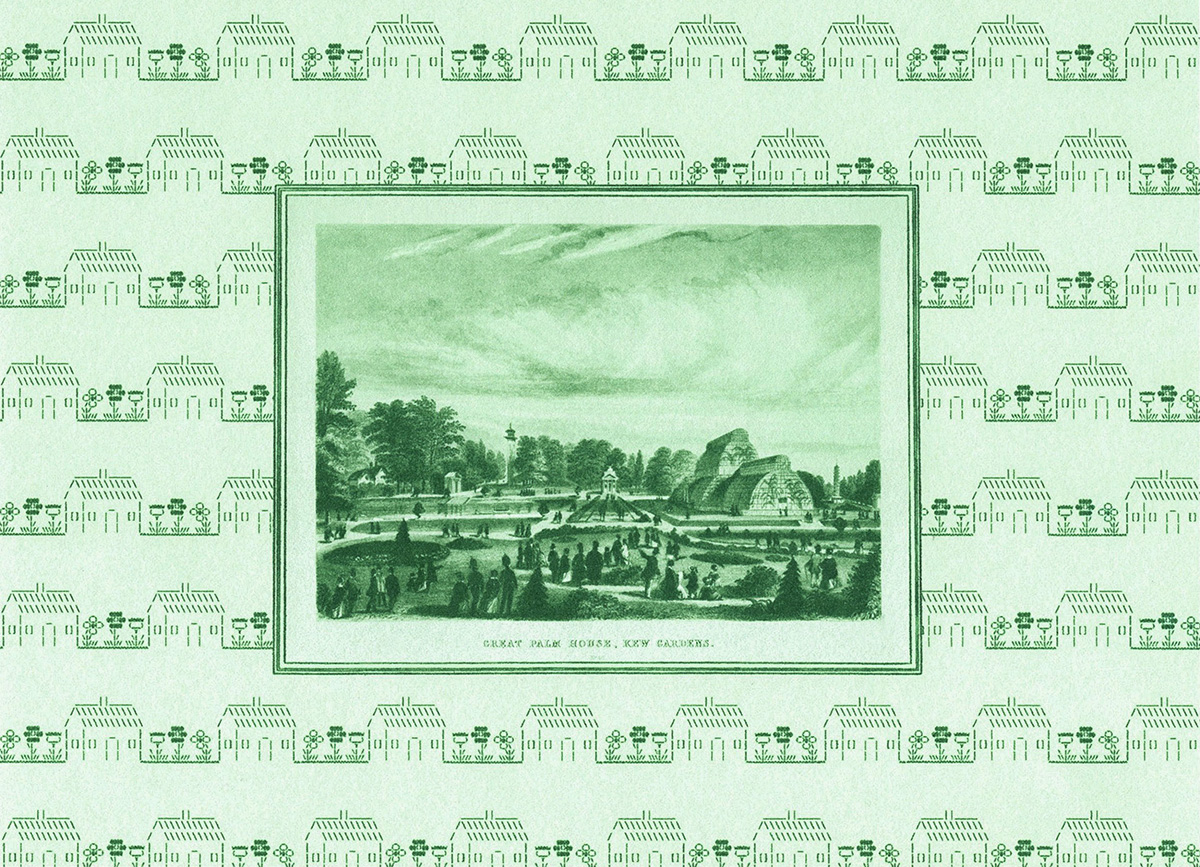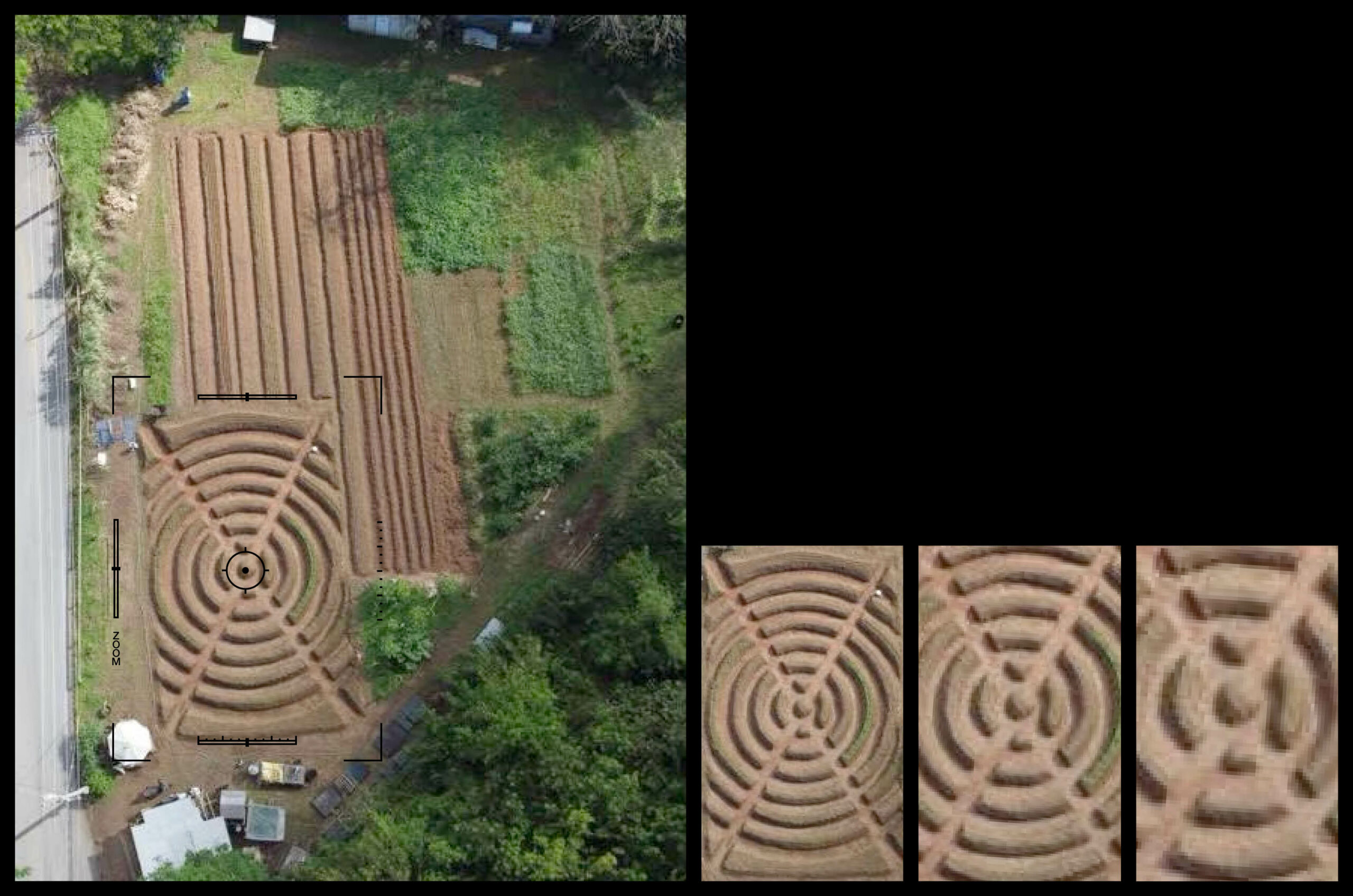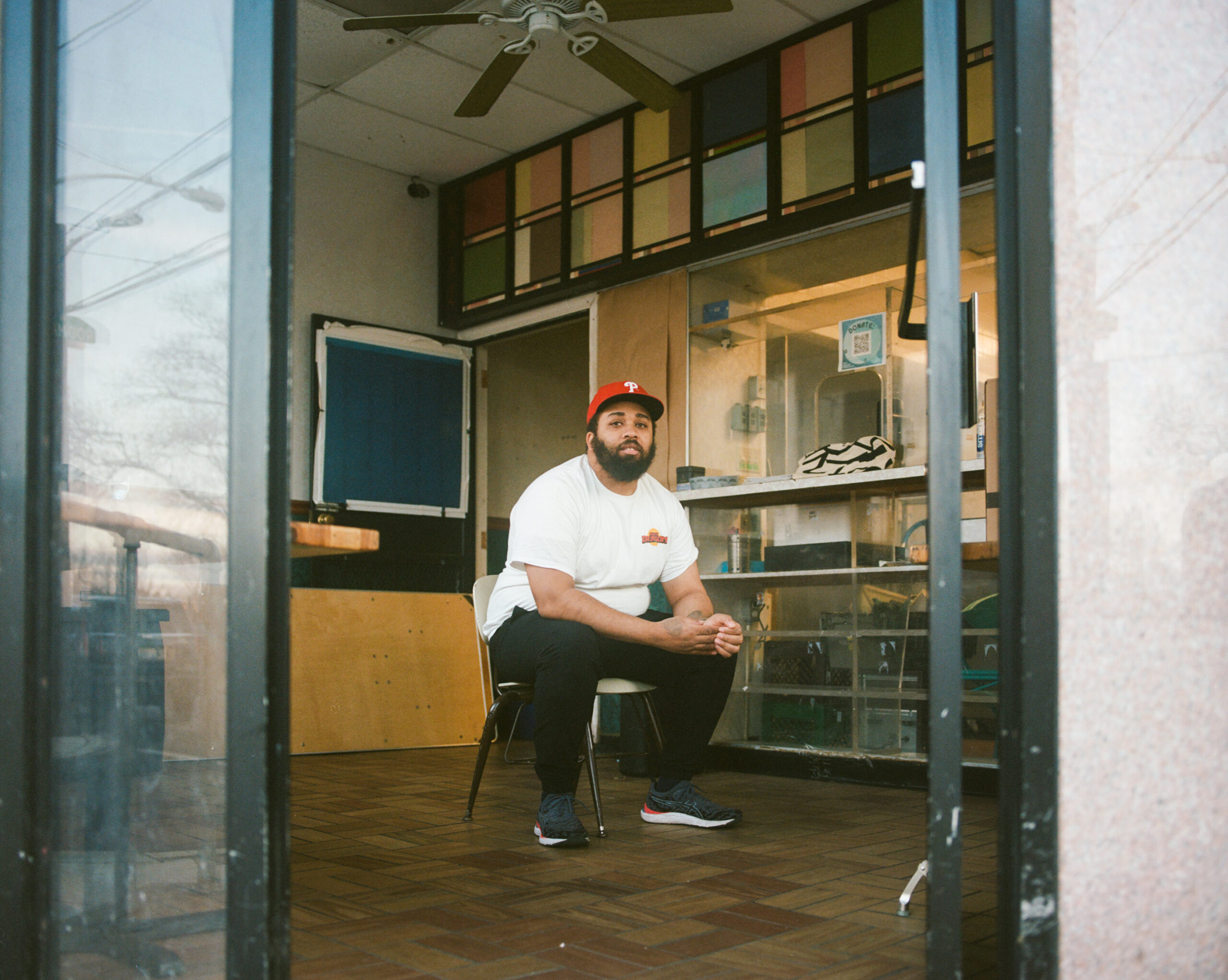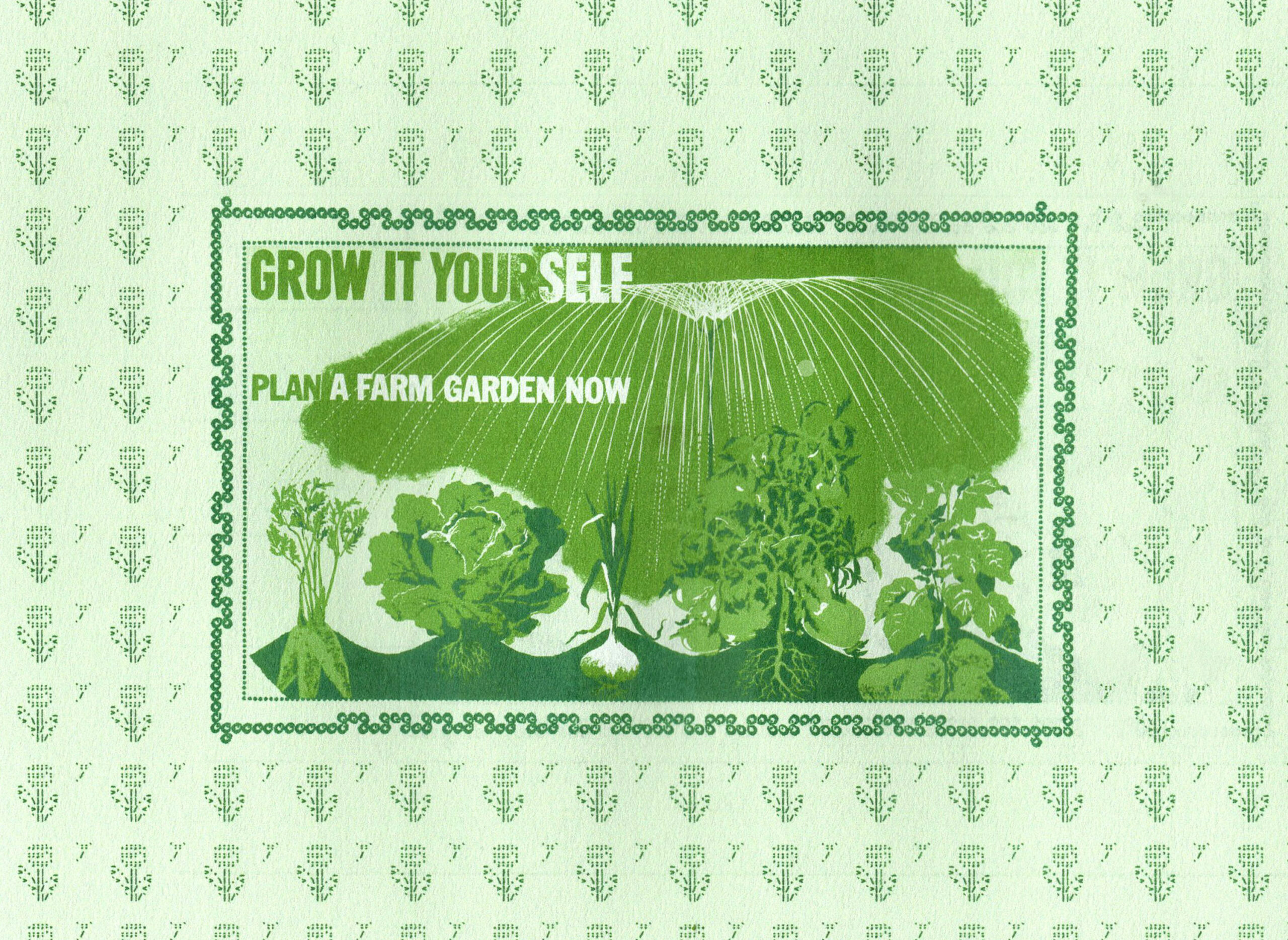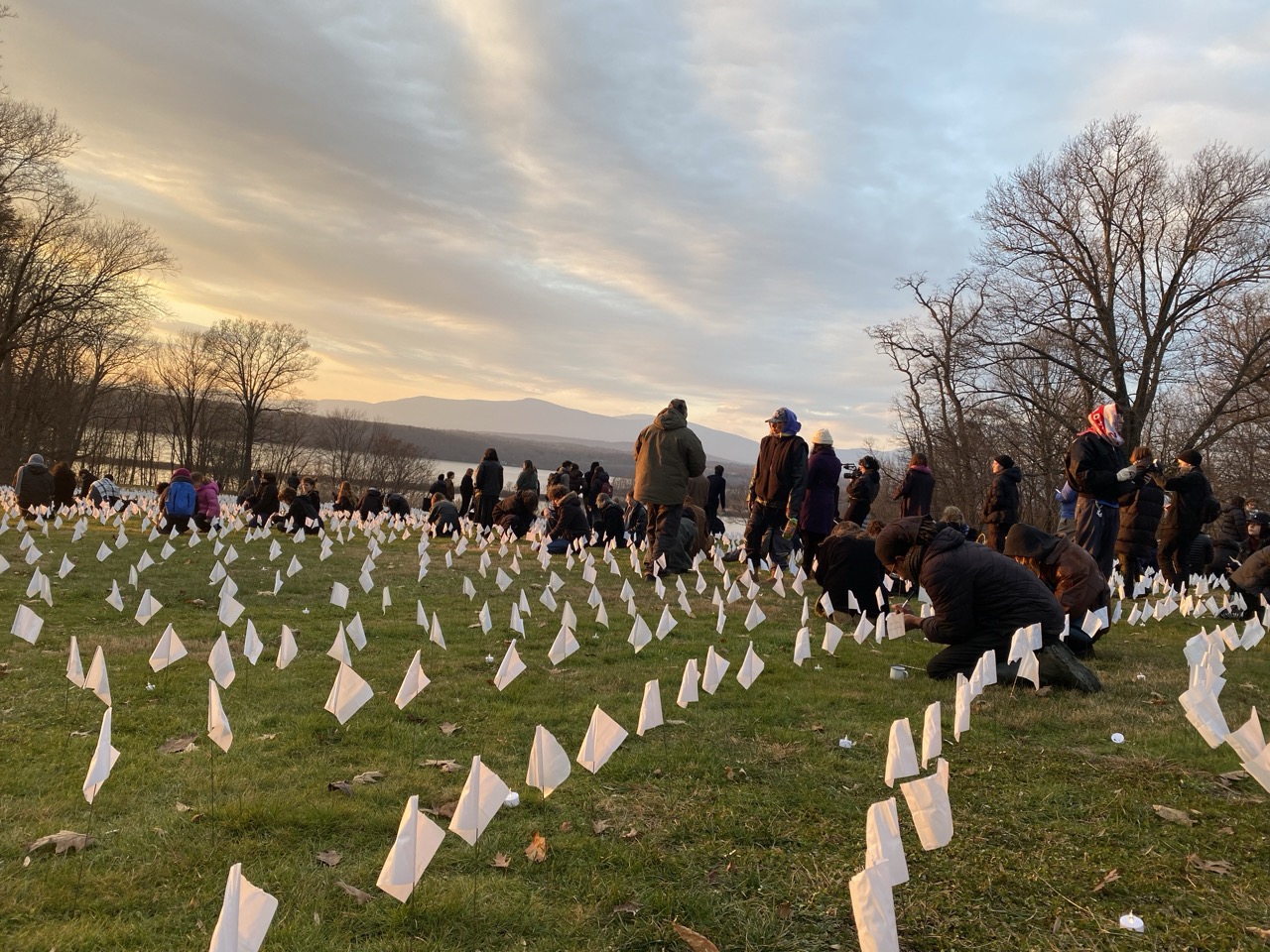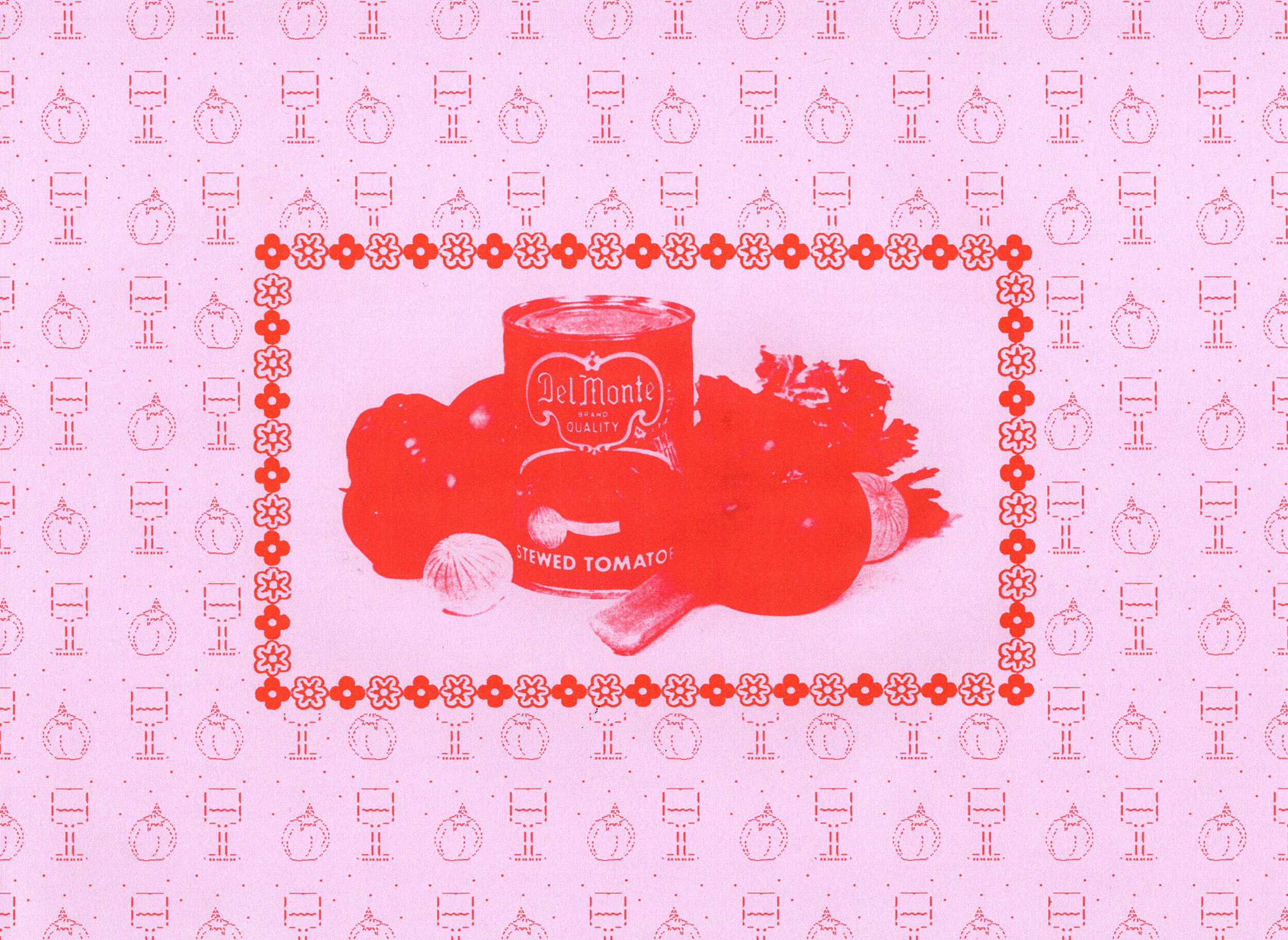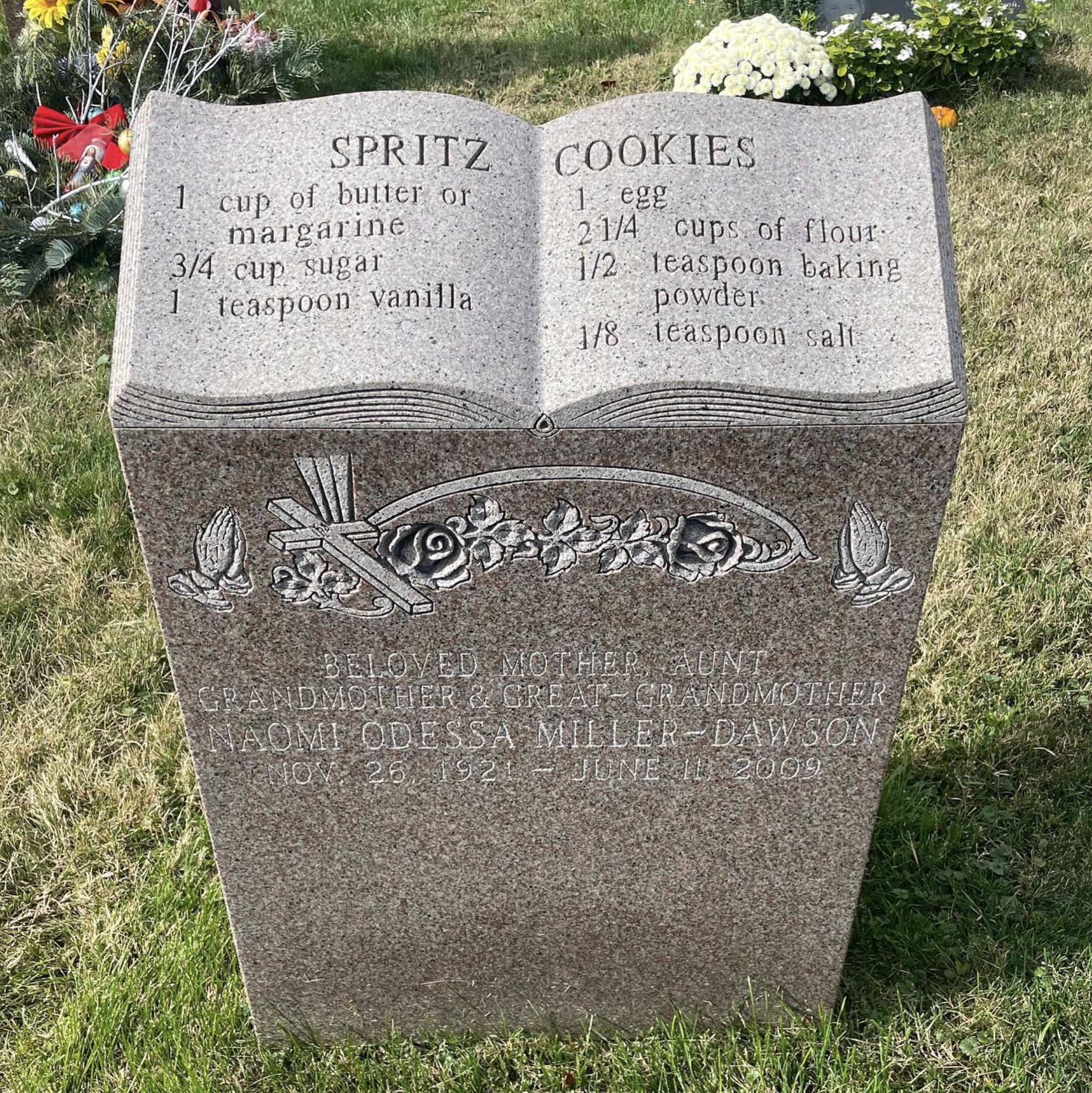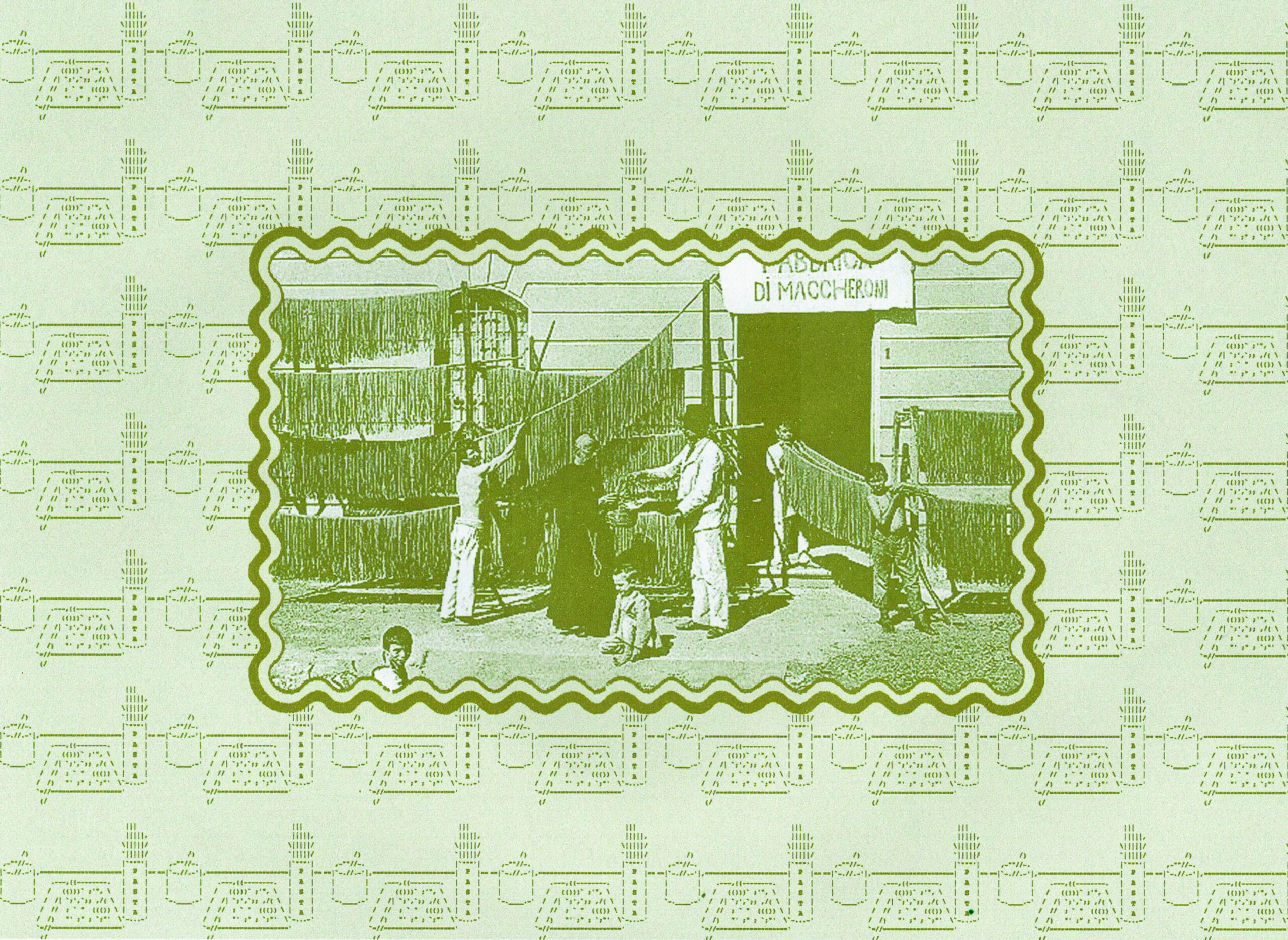Doug Bierend is a freelance journalist writing about science and technology, food, and education, and the various ways they point to a more equitable and sustainable world. His book, In Search of Mycotopia: Citizen Science, Fungi Fanatics, and the Untapped Potential of Mushrooms, is out now.
Johnny Drain:
In the book you chart your visits to a lot of different communities that have coalesced around fungi. Many of these communities and their members are engaged in progressive or radical causes: people carrying out citizen science, holding large corporations to account for environmental damage, championing intersectional equality and rights. Is there something within the nature of fungi that has made them a home for those sorts of conversations and actions?
Doug Bierend:
It’s hard to put my finger on exactly why that is or what it is about fungi that seems to attract that. I didn’t go to any meetings of salmon enthusiasts or geologists; are they having conversations about white supremacy and giving land back to indigenous people on the back of a conversation about fish, or whatever it might be? I don’t think that’s happening, I haven’t seen examples like that in other spaces. Encouragingly, fungi have a current cachet that gives me hope that those conversations might find their way into the mainstream a bit more.
I don’t know if it’s anything to do with the nature of fungi specifically as much as it is the nature of our moment and the things that fungi represent in that context, or the offer they present. People are hungry for alternatives. They’re seeing that our systems and our assumptions about the world and our relationship to it are lacking, unsustainable and leading us to disaster. I think that’s part of what’s driving a lot of people to be interested in these beings that can turn death into life and stay hidden while they keep the world working.
And then there’s the fact that by studying fungi, you’re becoming aware of ecologies and ecosystems by necessity, because fungi only make sense in the context of the trees they’re connected to, with the soil or the substrate in which they grow and the complexes of organisms that dance around them. I think studying fungi can make someone see things in a more biocentric way, and that seems to encourage a certain set of values. If you’re gathering around fungi, there are the preconditions for other ways of thinking, which resonate with a broader urge for change.
I can only really chalk that up to good fortune. Or some people might say it’s the fungi trying to tell us something! But I don’t know how I feel about that.
JD:
People in many parts of the world are living increasingly lonely and isolated lives. Might working with these organisms, which are community-driven, and so reliant on and integrated into broader ecosystems, provide an attractive counterpoint to this? Is a yearning for a sense of connectedness something that you found when you spoke to fungi enthusiasts?
DB:
Networks are naturally compelling and seem to attract interesting ideas and communities. I don’t think you need to have spent a lot of time in the woods to find notions of connection intriguing.
I think a lot of the people, not just those in this fungi world, can relate to the interest in the “wood wide web” and the soil food web and the connections of everything. There are figures like Paul Stamets, who draw really evocative connections between the internet and your brain and the forest networks, and there’s probably something to that.
Coming from technology and media, my interest in hearing about these networks in the forest shifted my attention to the point where I stopped caring about technology and media so much, and started thinking about the original networks of which I and we are all part, the ecologies and ecosystems of this planet. Again, fungi seem to lead one to these ways of thinking and perceiving.
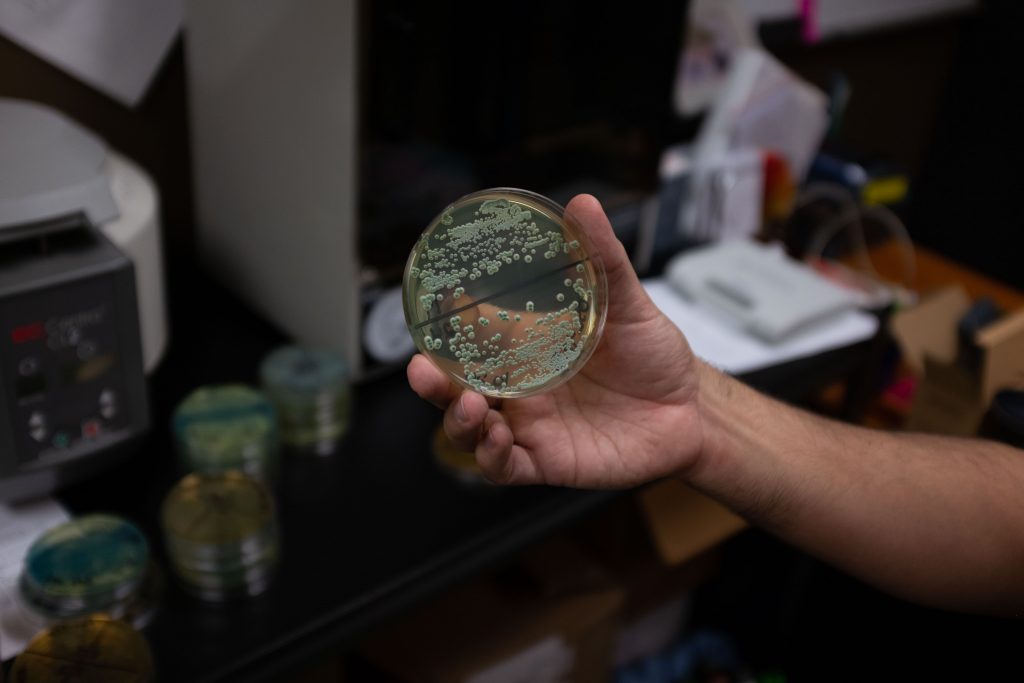
JD:
One of my favorite examples from the book riffs on the idea of using biological networks—slime molds, rather than fungi—to solve problems that might appear to be intractable or odd.
DB:
It was an allowance to myself in this book to discuss slime molds, which are not fungi, but are often confused with fungi.
They’re an amoeba. They are, from what I understand, more related to a bacterium like E. coli than to any fungus, but they can apparently remember things, they can optimize and solve problems such as mazes. They’ve famously been used to simulate transit networks just by replacing cities with oats on a miniature map in a petri dish; you can get a slime mold to re-invent the Tokyo subway system. One can also train them with bits of other slime molds that have been “trained” previously to do something, like overcoming an aversion to a certain chemical, even though they have no brain or nervous system via which to pass on that training.
The project I mention in the book was done by Jonathon Keats, an experimental philosopher, who formed an organization at Hampshire College, MA, to ask slime molds questions of social importance, such as how to adjust bus routes in the area to be more equitable to under-served communities, or to investigate the best border policy for this or that population.
I think the point of that experiment was actually not to come to any useful data or information but more to challenge the reflective wrinkling of noses that probably happens when you say “maybe we should ask a slime mold about American drug policy”. It’s a human chauvinism that I think they were trying to undermine with that project. And I think it’s probably a healthy goal.
Our systems and our assumptions about the world and our relationship to it are lacking, unsustainable and leading us to disaster. I think that’s part of what’s driving a lot of people to be interested in these beings that can turn death into life and stay hidden while they keep the world working.
JD:
Most people would be familiar with fungi from having eaten mushrooms, but you mentioned that fungi are great devourers of detritus, which people might not be familiar with. How might we use that power in the future?
DB:
Recognizing that waste is a relative term comes from getting to know fungi and looking at the forest and seeing a log fallen over as not something dead, but something harboring life and becoming new life by being broken into its constituent elements. Fungi are the lead force in that phenomenon. And that’s part of why we don’t just have giant tracks of logs but we have, instead, forests.
Theirs is an essential function. And as far as any example that we can learn from, it shows we probably shouldn’t be producing anything that we might call waste. Waste is an unnatural concept, it turns out.
And the other side of it is how people are starting to learn to leverage that capacity in ways that reflect human priorities. One priority that humans agree with and benefit from is a functioning ecosystem. So it’s not all bad to say that humans are seizing fungi as a tool, a partner, in these projects. But one of those projects is dealing with the vast amounts of waste, toxic chemicals, heavy metals, contaminated waterways and soils produced by human activity. This is the area of myco-remediation that many people are excited about, because the same capacity that fungi have to dissolve lignin and cellulose in fallen trees or chitin in insects can be leveraged to break down complex compounds that are tough to remove. Fungi have an immense power to do that, which is only just beginning to be investigated.
It’s extremely encouraging, although there’s maybe a temptation to assume that if we just find the right strains of mushrooms and distribute them in a problem area, that they’ll fix it. I feel that the benefit of that myco-technology is not just about actually soaking up the oil or the toxic elements, but also about getting us to reconsider how we operate, and factoring natural processes and organisms into how we move and operate as a society, to the point where we’re thinking first and foremost about our effects on the landscape and its ecologies.
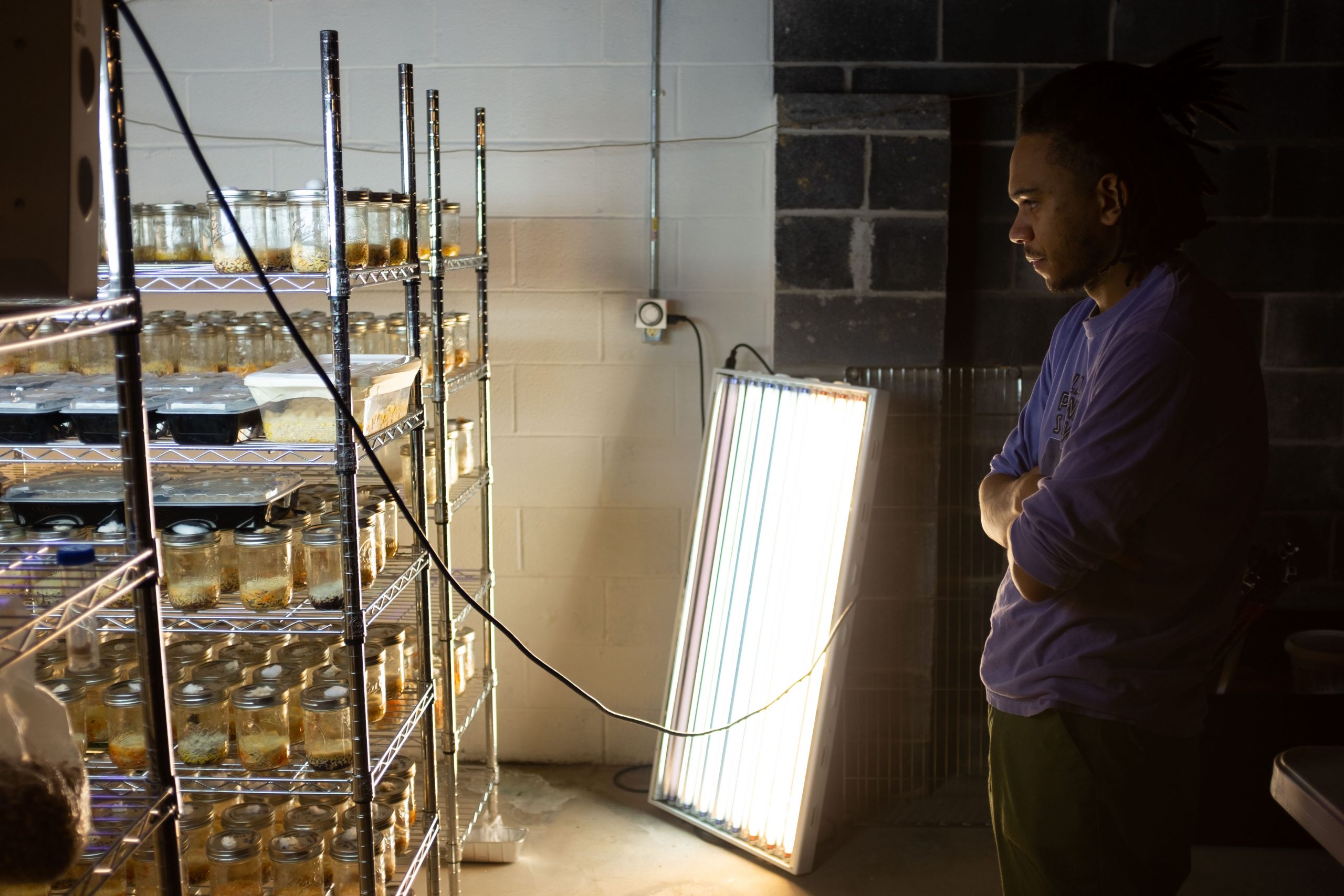
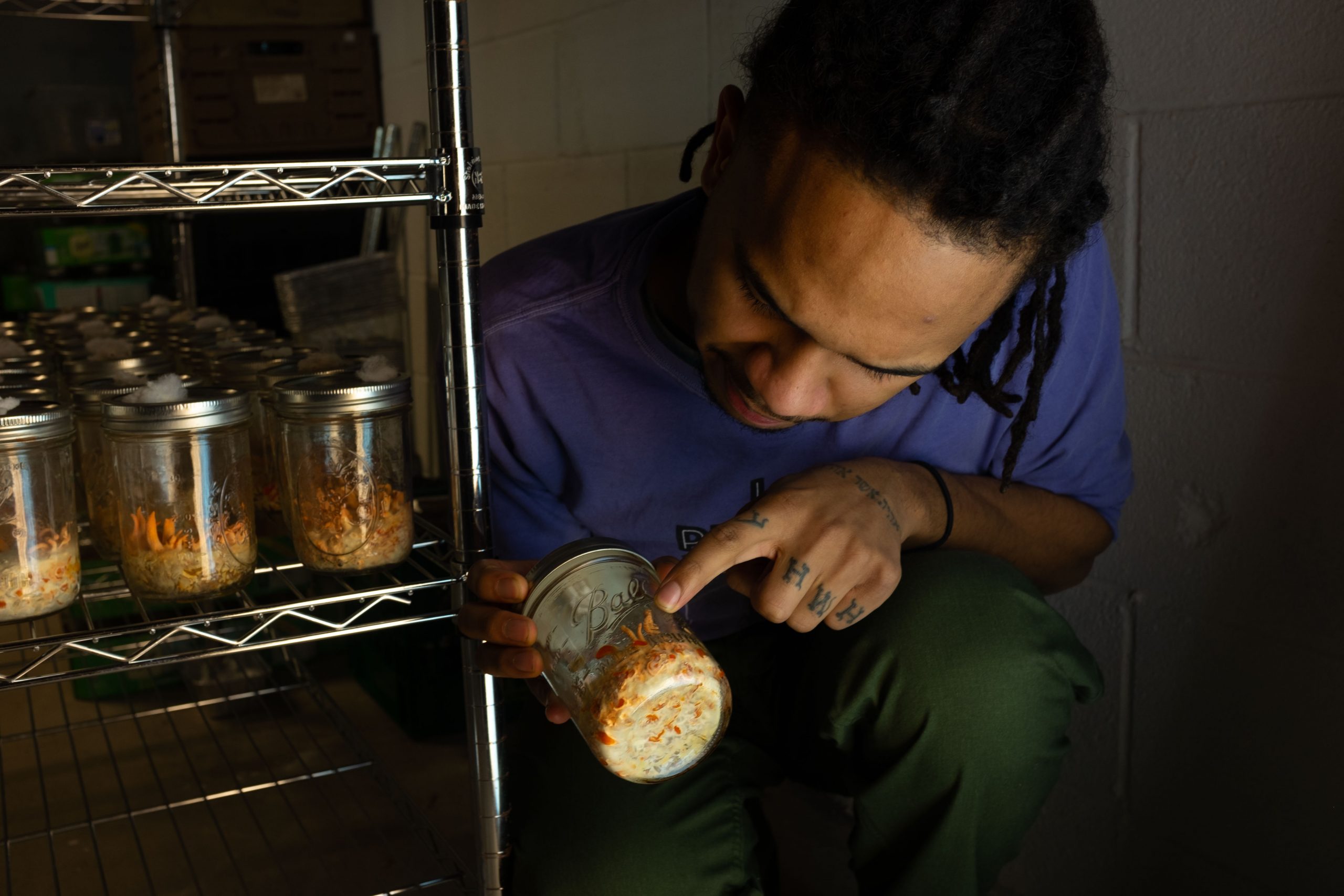
JD:
We have to be careful that we treat the causes and not just the symptoms?
DB:
Yeah. Admittedly I’m trying to smuggle my worldview into the book and my answers here! To me, the idea that we can fix our problems by plugging a mushroom into them is much the same mentality as saying, if we’re cutting down too many trees, ‘well, we’ll just plant them and get them to grow back fast.’ There’s a danger that you start thinking of things in terms akin to circuit boards that can plug and unplug, like modules, in response to problems that come up.
I like the idea that even in the area of fungal myco-remediation, there’s debate opening up about how to make the fungus just one element in a suite of processes that aren’t managed, but rather encouraged, in a process called bio-stimulation. One of the sections of the book looks at approaching environmental remediation less as a system that we design and implement, and more as an existing ecosystem with which we interact to encourage the dissolution or immobilization of toxic elements. To me, that seems a much more virtuous way of approaching those problems.
[Fungi] are a dimension of the natural world that we haven’t completely colonized yet, and that we haven’t fully turned into a value that we can extract, and to my mind, that makes it a space of great possibility.
JD:
As ever in your book, you’re never very far away from politics and social issues: lots of the places where those landfills are, or those oil spills are, disproportionately affect indigenous people, people of color and less privileged people.
DB:
There’s even a term for it: environmental racism. In the case of the Pueblo communities in northern New Mexico, for example, they live next door to a lab complex that builds nuclear arms, and built the first nuclear bomb. A lot of noxious and dangerous things have contaminated the lands and waterways quite thoroughly around the area. There’s the story of women from one of the local Pueblo communities, whose members felt alienated from decisions about processes that are contaminating their lands that their ancestors lived on for millennia. They tried to encourage remediation of a hexavalent chromium plume by way of myco-remediation, because it’s a “natural” method, a biocentric approach to the problem rather than an industrial one or a mechanical one. They arranged to have a hearing, they organized their community, there was a lot of enthusiasm and energy. And at the hearing they were basically told that they wouldn’t be getting their wish, the myco-remediation wouldn’t be tried. There was a community that wanted to have a say in how their lands are managed and healed, to exercise their agency, to hold a seat at the table. And their hopes were dashed. But even in the midst of not being able to achieve what they had set out to achieve, there was still resilience in the example of planting mushrooms in their gardens, which they were designing according to traditional practices and with an eye to decontaminating wastewater and hydrocarbon runoff from a nearby parking lot. A small, but meaningful to me, poignant gesture of resistance and resilience in the midst of what people might call nuclear colonialism. In all of this, it’s not really about mushrooms.
JD:
In what ways is the future fungal?
DB:
The flippant answer would be to say that in many of the same ways as it’s always been in the past: they’re everywhere and inescapable, and are such a fundamental part of what keeps us — life as we know it — going. As far as what humans might have to do with it, I’m hoping that we may soon have many new and innovative myco technologies, whether it’s for remediation, food, medicine, new biomaterials, or synthetic meats. There is all sorts of promise in these areas.
But more than that, if “the future is fungal” in the way that I hope it will be, it will be reflected in the ways that we relate to the planet. The consideration we give to the complexities of systems that we can’t even begin to understand, even as advanced as we think we are
And in the way that we deal with one another, because you know, something that fungi have learned over millions and millions of years is how not to degrade the basis on which their and their neighbors’ lives depend.
My enthusiasm for fungi is based in large part on how I see people gathering around them, though, far more so than any new innovation or discovery that I think might come around. I’m already seeing communities forming around fungi with well defined values and a strong social and ecological consciousness, which to me is the most promising part of all.
JD:
I love the idea of fungi as being community leaders and teachers of human beings.
DB:
Yes. Among the mycophiles there’s a definite sense that fungi have agency and presence, and people will talk about ‘meeting them’ in the woods. I think there’s maybe some basis for that, just at the biological level. They’re sort of halfway between plants and animals — they’re fleshy, with ‘root like’ structures underneath — so there a kind of willingness to relate to them. It’s a dimension of the natural world that we haven’t completely colonized yet, and that we haven’t fully turned into a value that we can extract, and to my mind, that makes it a space of great possibility.
I think that also poses a lot of questions and holds a mirror up to us. Whether we’re having a nice walk in the woods or whether we’re thinking hard about these big problems — here’s something we don’t really understand, which is also fundamentally important and deeply connected to us, yet invites us to step outside our usual frames of reference. There’s a lot of potential in that, of knowledge yet to be gained, or relationships yet to be formed with this dimension of the natural world, where we can actually set the terms early on, now, for how well we’ll move forward.
I’m hoping that it’s undertaken differently to the way our species’s relationship to plants and animals has broadly gone, at least in this [Western] culture.Of course different parts of the world have different relationships to nature, but unfortunately the industrial areas are the ones setting the terms for the rest of the planet at this point.
JD:
Finally, do you have a favorite fungi?
DB:
Probably reishi, First of all, it’s a beautiful mushroom. It’s a gorgeous ochre, and lacquered; it looks like something carved from wood. It’s also the first mushroom I saw at the beginning of my journey, in a radical mycologist’s cultivation lair, and it has come to represent to me a symbol of this ‘myco community’.
